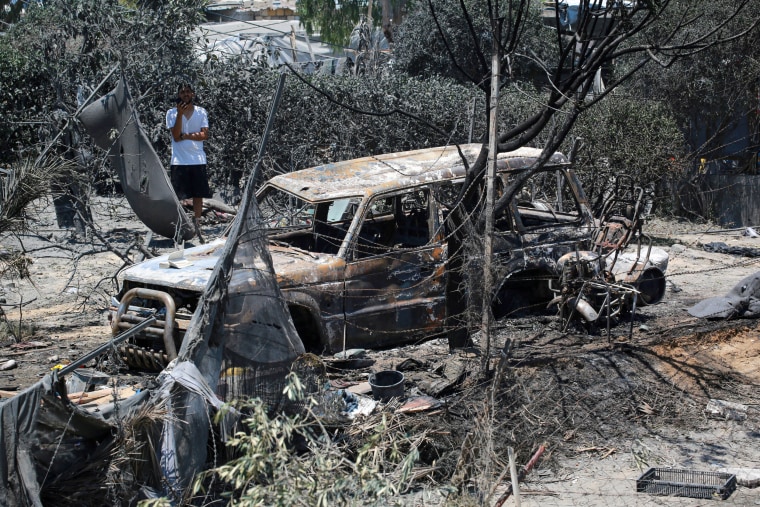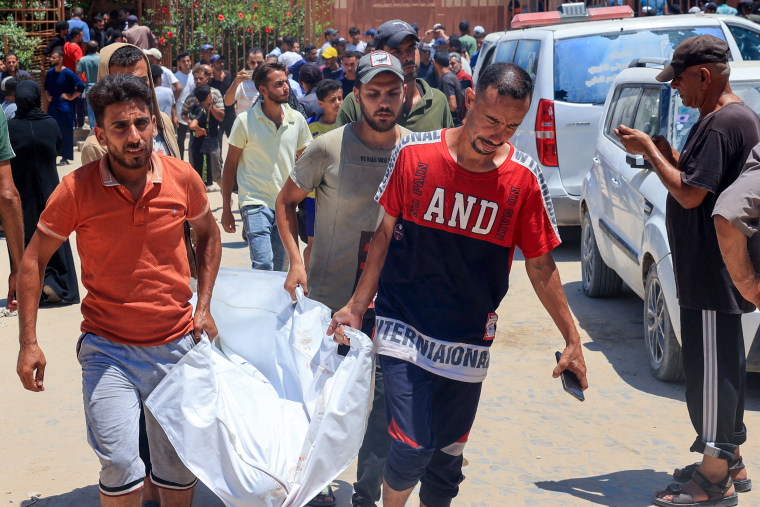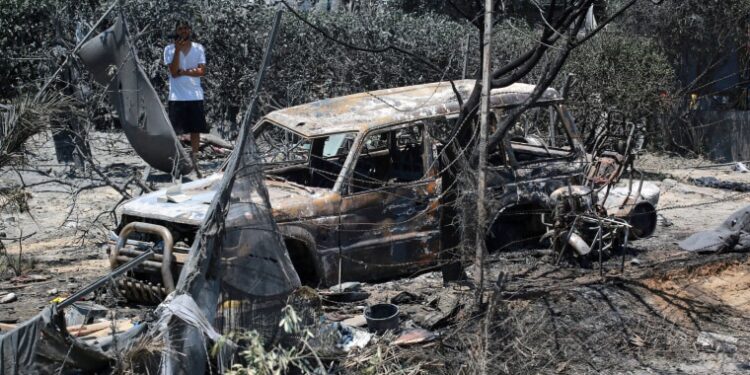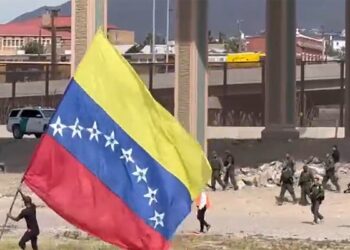Israeli strikes killed at least 70 people and injured hundreds more in the Al-Mawasi area west of Khan Younis Saturday, according to Palestinian health officials, in an operation the Israel Defense Forces said targeted two top Hamas officials, including Mohamed Deif, the head of Al-Qassam Brigades, Hamas’ military wing.
Palestinian health officials have called the attack a “massacre.” In an interview with Reuters, Hamas spokesperson Abu Zhuri dismissed reports that the strike targeted Deif as “nonsense,” even as the scale of the attack threatened to further stall progress on already-strained cease-fire talks currently underway in Cairo and Doha.
Footage captured by Reuters showed hundreds of men, women and children running away from a large plume of smoke on the horizon. Many carried their bloodied and unconscious injured slung over their arms or on makeshift stretchers.

Smoke from a flaming and blown-out vehicle fogged the air as a woman wept amid the chaos. “They’re all gone, my whole family’s gone,” she said. “Where are my brothers? They’re all gone, they’re all gone. There’s no one left.”
In a press conference Saturday, IDF spokesperson Daniel Hagari said the attack was a targeted strike on a Hamas compound surrounded by trees, buildings and sheds, and not a tent complex. He added that senior military commanders Mohammed Deif and Rafa Salama, and other Hamas terrorists were present in the area, but did not share details of that intelligence and said that IDF was still verifying the result of the strike.
Abu Zhuri told Reuters that “all” those killed were civilians. NBC News is not able independently verify the statements by either the IDF or Hamas.
Reuters’ video showed damage and debris as people sifted through the destruction among the white tents used by displaced Palestinians.

The IDF had declared Al-Mawasi a safe humanitarian zone in December, though the area has been repeatedly attacked since. During the press conference Hagari said the IDF had called for civilians to move to the area, but that Hamas’ high-ranking leaders had embedded themselves among the population, prompting the strike.
Nearby hospitals were overwhelmed with casualties.
Mohammed Saker, a spokesperson for Nasser Hospital, told NBC News that the hospital did not have the capacity or medical supplies to deal with the wounded and injured, and that he expected “a number of wounded to die due to the lack of treatment.”
Within a few hours, Dr. Muhammad Saqr, Director of the Nursing Department at Nasser Hospital, told Quds News Network that the hospital was “unable to continue offering medical and nursing services due to the high number of deaths, injuries and amputees.”
The Palestinian Red Cross posted on X that Al-Amal Hospital in Khan Younis had received dozens of patients following the strikes, including some of those displaced and living in the organization’s shelter camp inside the impacted area.
It is unclear how the strike will affect cease-fire talks, with the attack coming just one day after President Biden put out a statement saying Israel and Hamas had agreed to a framework.
“Six weeks ago I laid out a comprehensive framework for how to achieve a ceasefire and bring the hostages home,” he posted on X.
“There is still work to do and these are complex issues, but that framework is now agreed to by both Israel and Hamas.
“My team is making progress and I’m determined to get this done.”







